LG C4 is a television that, in its price range, will likely have no competition for many users. Thanks to its extensive capabilities, it will appeal to those looking for a television not only for films and series but also for gaming. The advanced WebOS system and a remote control that functions like a mouse will certainly be a significant convenience in everyday use, making it likely that we will stick with this brand for much longer. The OLED panel implemented by the manufacturer, resulting from over 10 years of history, shows that this brand has not yet said its last word. The brightness results in HDR materials are very solid and can deliver an incredibly dynamic and deep image. It is worth mentioning the excellently implemented dynamic tone mapping feature, which makes HDR10 content look almost as good as Dolby Vision. And when it comes to fidelity to artistic vision, one cannot overlook how calibratable LG televisions are, allowing considerable freedom for calibrators and classic calibration for home users, as well as 3D LUT for professionals. However, if we are looking for a gaming television, then the LG C4, like most of the manufacturer’s OLED televisions, will be an ideal choice. With the implementation of HDMI 2.1 ports and the full utilisation of their potential, we can enjoy incredibly smooth gameplay with all the benefits, such as VRR, ALLM, FreeSync, and G-Sync. Of course, the panel, with a maximum refresh rate of 144 Hz and an advanced motion smoother, will also provide a very smooth and sharp image during the broadcast of various sporting events. It is hard not to give a high rating to LG OLED C4, as a television in a similar price range with such advanced features is difficult to find among the competition.
- Matching (Score)
- Our verdict
- TV appearance
- Where to buy
- Contrast and black detail
- HDR effect quality
- Factory color reproduction
- Color reproduction after calibration
- Smoothness of tonal transitions
- Image scaling and smoothness of tonal transitions
- Blur and motion smoothness
- Console compatibility and gaming features
- Input lag
- Compatibility with PC
- Viewing angles
- TV efficiency during daytime
- Details about the matrix
- TV features
- Apps
- Playing files from USB
- Sound
LG OLED C4 vs TCL C9K
Direct compare
C45 / C41
C9K

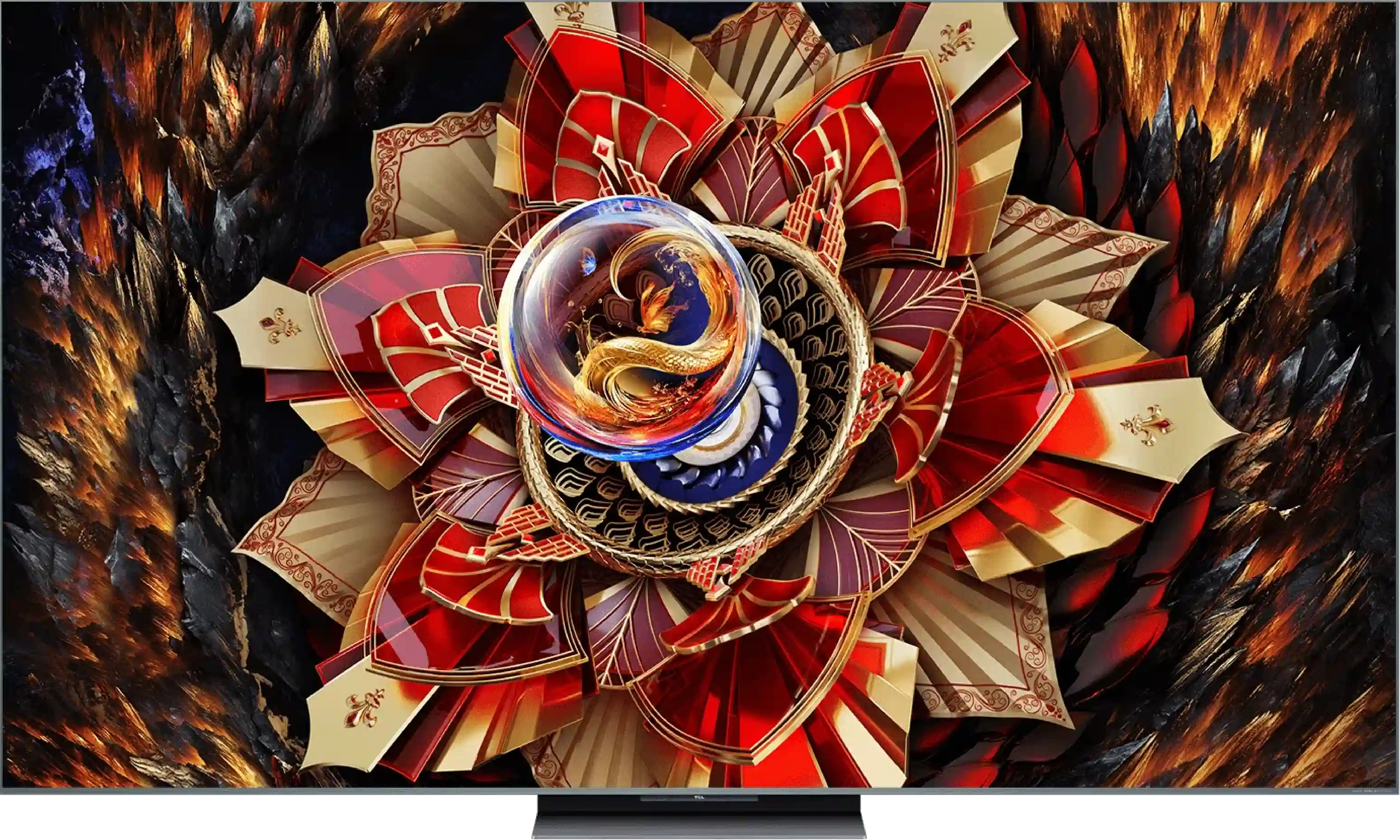
Panel type: WRGB OLED
Resolution: 3840x2160
System: WebOS
Model year: 2024
Complete the survey to find out the result

Panel type: LCD VA
Resolution: 3840x2160
System: Google TV
Model year: 2025
Complete the survey to find out the result

Overall rating
8.1
7.7
Movies and series in UHD quality
8.1
7.4
Classic TV, YouTube
8.8
7.0
Sports broadcasts (TV and apps)
8.6
6.8
Gaming on console
9.3
8.9
TV as a computer monitor
8.6
8.6
Watching in bright light
5.7
7.0
Utility functions
8.2
7.7
Apps
9.1
9.6
Sound quality
7.5
7.9
Complete the survey to find out what fits your preferences
Advantages
High efficiency in HDR materials
Very good colour reproduction after calibration
Faithfulness to the image with directorial vision
Excellent collaboration with consoles and PCs - low input lag, a wealth of conveniences
Advanced motion smoothing system
Very good contrast and black levels
Very high brightness
Support for all HDR formats including Dolby Vision
Fast 144Hz panel - for gaming and sports enthusiasts
Many features for gamers: VRR, ALLM, low input lag, etc.
GoogleTV operating system with a wide range of applications
Excellent sound branded by Bang & Olufsen
Improved viewing angles thanks to WHVA panel
Disadvantages
Sometimes visible tonal transitions
Local dimming needs improvement
Only 2 HDMI 2.1 ports
No recording function from built-in tuners and PiP
No smaller variants, e.g. 55"
Our verdict
TCL C9K is a television that on paper looks like a showcase of the manufacturer's strength – thousands of Mini-LED zones, a WHVA panel, audio system from Bang & Olufsen, full support for HDR formats, gaming at 144 Hz, and even 288 Hz at lower resolutions. It is clear that TCL wanted to include absolutely everything it had best. And indeed – in many aspects, the C9K is capable of impressing. The brightness is enormous, HDR in large scenes can be stunning, motion fluidity and capabilities for gamers are at a top level, and the sound – considering it is built into the television – sounds really good. This is a device that can easily be regarded as a home entertainment hub. But there is also a downside. Managing brightness simply falters despite the incredible technical specifications – finer details often get lost in shadows or are blown out. And although synthetic tests of contrast and brightness perform excellently, the effect during everyday viewing of films and series is no longer so impressive.
In short: the C9K is a television full of contrasts – literally and metaphorically. It can deliver experiences similar to top screens, but it is still evident that TCL needs to work on software and optimisation. If someone is looking for a screen for gaming, sports, or spectacular blockbusters – they will be delighted. However, if they expect perfect representation of the director's vision and think they have managed to purchase an absolutely top model at half the price of the competition, they will unfortunately be disappointed. It's a shame, because the technological potential here is truly enormous – it just lacked a bit of common sense in its utilisation.
TV appearance




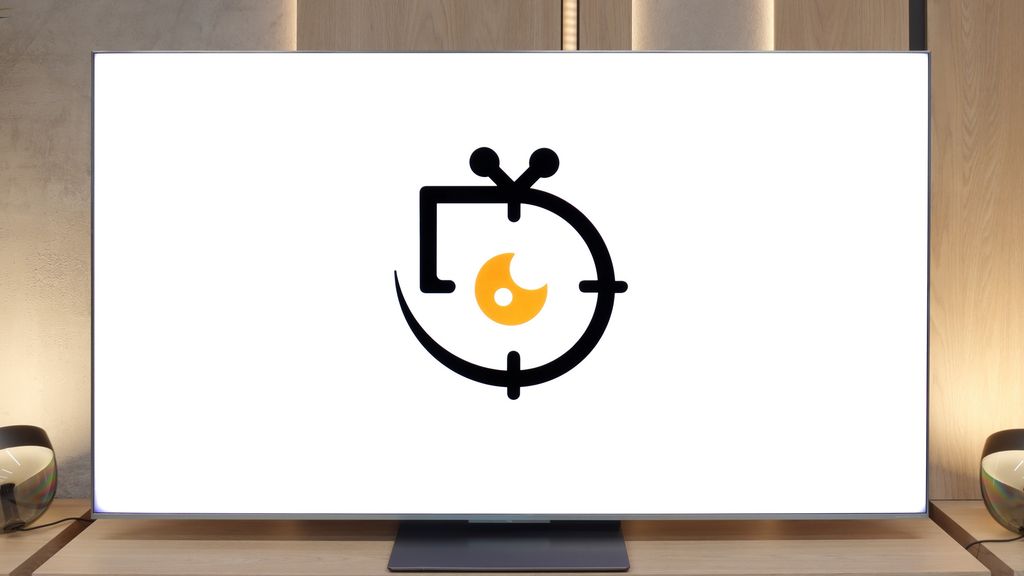
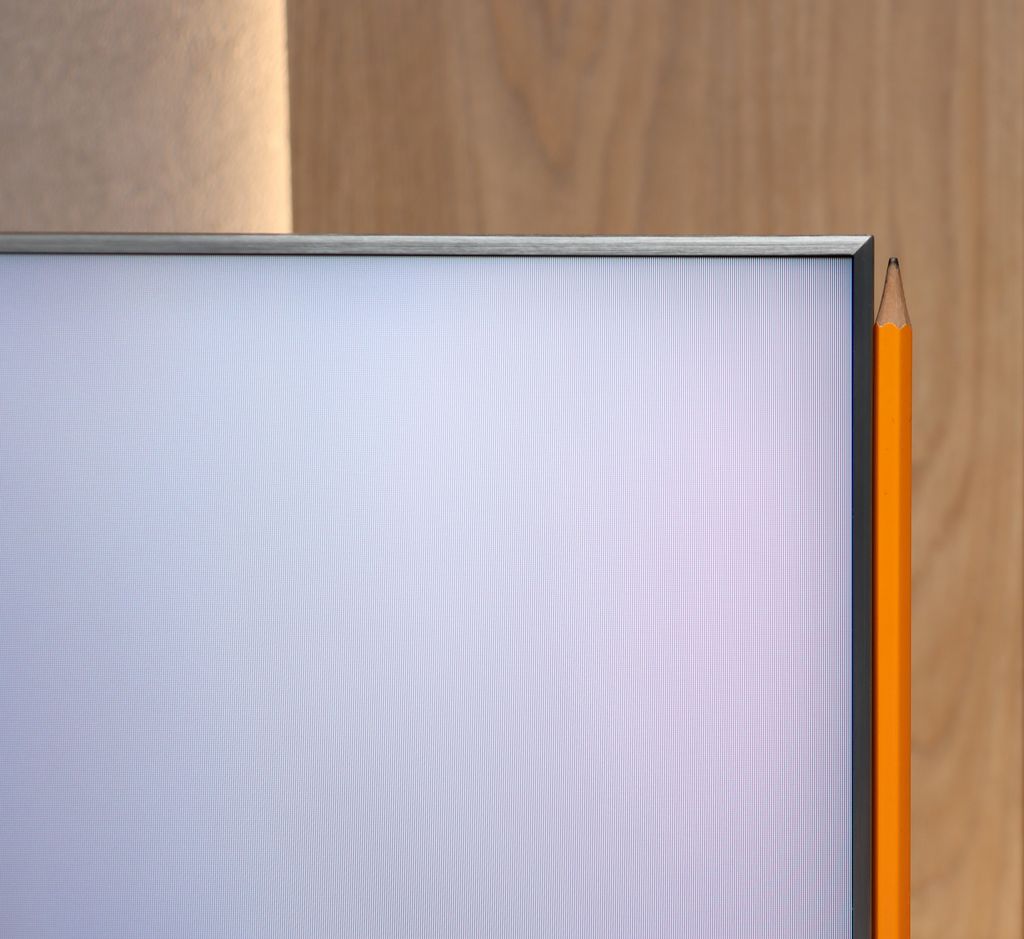
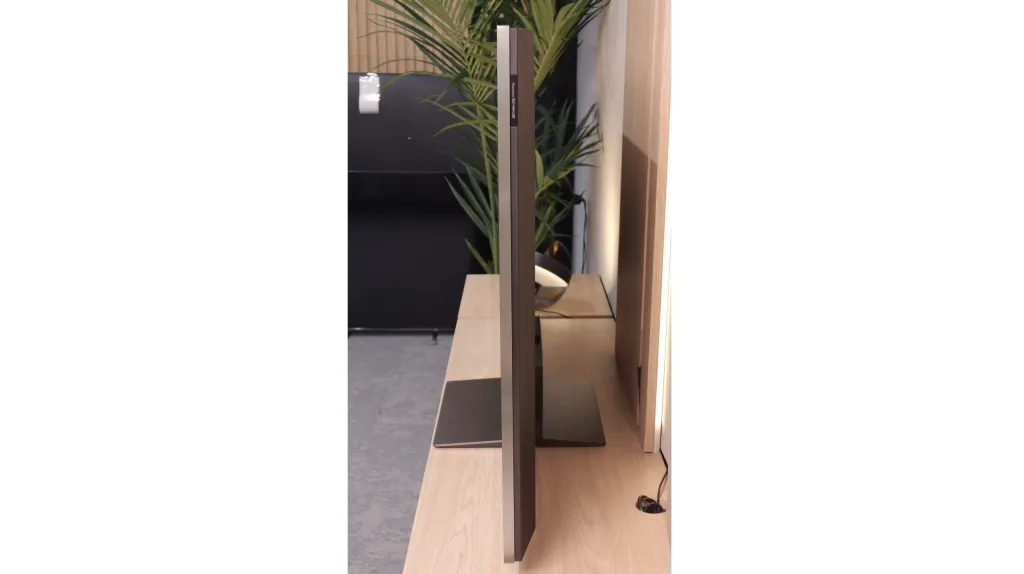
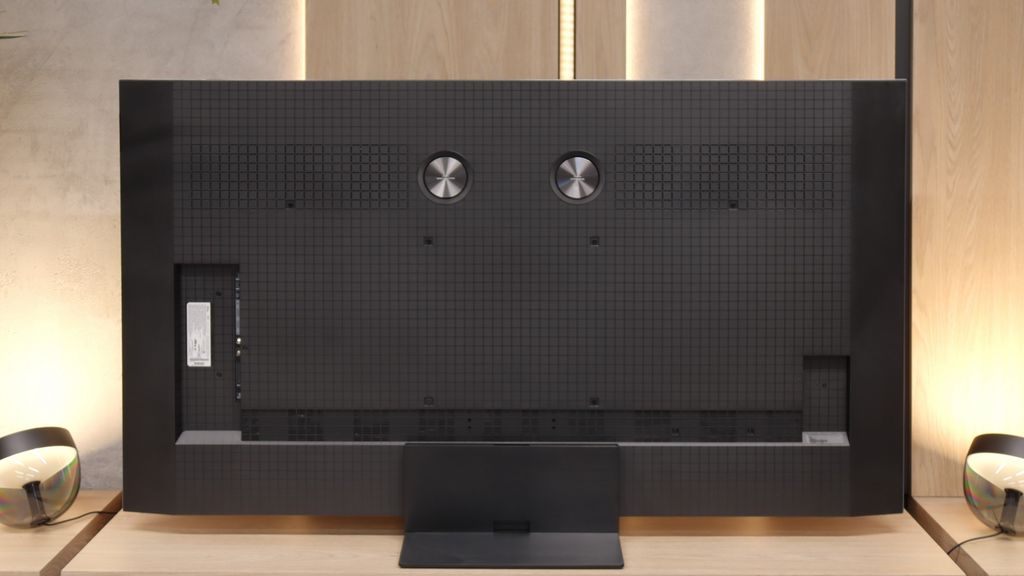
Contrast and black detail
10/10
8.1/10
Local dimming function: Yes, number of zones: 3024 (42 x 72)
Contrast:

Result
∞:1

Result
∞:1

Result
∞:1

Result
∞:1

Result
∞:1

Result
459,000:1

Result
72,750:1

Result
30,350:1

Result
9,800:1

Result
12,200:1
Halo effect and black detail visibility:

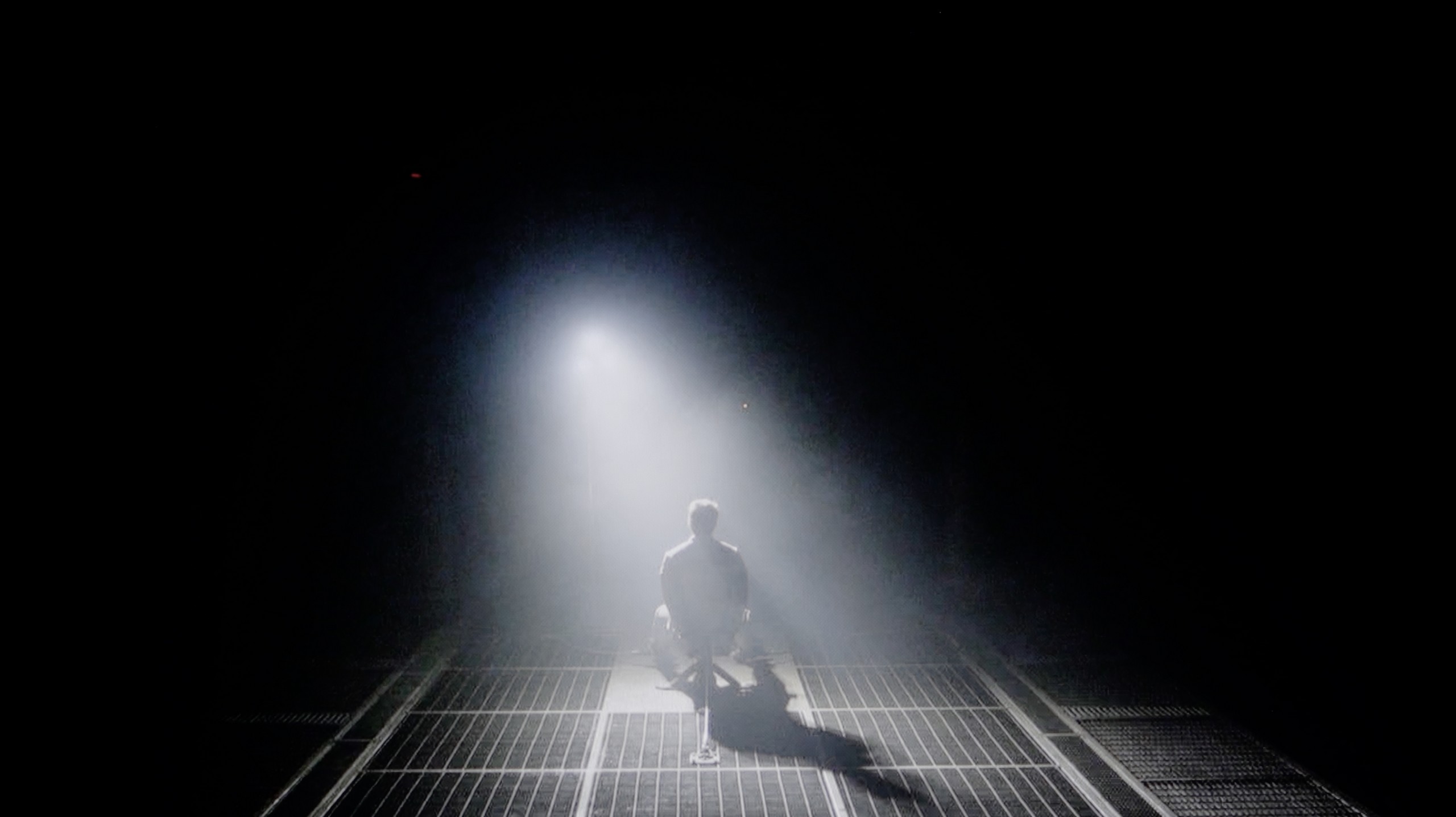
LG OLED C4, as the name suggests, uses an organic panel of its own production. This series definitely ranks among the most recognisable on the market. Over 10 years of experience in the construction of self-emitting panels has allowed for the refinement of each subsequent design, with the models from the 2024 vintage being the epitome of this. Of course, the use of this type of screen enables the achievement of impeccable contrast and blacks, allowing for immersion in the world created by the director. This is made possible by the OLED panel, characterised by the absence of conventional backlighting, with current passing through organic pixels instead. This allows for super-accurate control of the image, thereby eliminating issues such as the dimming of delicate fine details or the halo/blooming effect. Looking at both of our test scenes, we can observe two things: perfect separation of lights and a whole plethora of details in the film "Sicario 2".
What immediately distinguishes the C9K from the C8K model is the number of backlight zones. In the 65-inch version, we counted… over 3000! One has to admit – it's a true display of TCL's strength, cramming literally everything they had at hand into this television. On paper, it makes a huge impression and indeed – in less demanding movie scenes, the blacks look fantastic. The level is absolutely top-notch, and the separation of lights from dark parts of the image can be impressive. The problem is that this impressive specification does not always translate into practice. In our tests, we noticed situations where the C9K, despite having a greater number of zones, could fall into contrast traps and performed… worse than the C8K. For instance, it struggles to perfectly dim the true black bars in 21:9 format films (those with black bars at the top and bottom). Sounds strange? Unfortunately, it's the result of a lack of optimisation – the hardware is 'packed' with technology, but the algorithms do not always keep up with making use of that potential.
Don't get us wrong – black levels are a strong point of the C9K and in many scenes, it looks simply fantastic. In synthetic measurements, the contrast performs remarkably well, coming close to the levels of the best televisions on the market. But in real cinematic usage, these numbers do not always correlate with a better experience than with its cheaper cousin. And that is perhaps the greatest disappointment – because the potential was huge.
HDR effect quality
6.6/10
6.9/10
Luminance measurements in HDR:

Result
796 nit

Result
772 nit

Result
869 nit

Result
837 nit

Result
604 nit

Result
1425 nit

Result
531 nit

Result
1277 nit

Result
331 nit

Result
1424 nit
Scene from the movie “Pan” (about 2800 nits)


Scene from the movie “Billy Lynn” (about 1100 nits)


Static HDR10


Dynamic: Dolby Vision
Dynamic: Dolby Vision


HDR luminance chart:
TCL C9K
Luminancja HDR
Luminance of RGB colors
LG OLED C4
Luminancja HDR
Luminance of RGB colors
The results of HDR materials are definitely among the better ones. Practically every film significantly exceeds the 700 nits barrier, allowing for a very realistic image. Of course, none of them surpasses the magical thousand, yet the combination of such results and unlimited contrast and black effectively boosts the outcome optically. The last of the scenes, featuring a full-screen burst of sunlight, is actually less bright than the others, although it still represents a commendable level. It is also worth mentioning the excellent coverage of the DCI-P3 colour palette, which will allow for achieving extremely vivid colours.
As we mentioned with black and contrast – the C9K makes a huge impression in synthetic tests. Our measurements showed that on a screen 10% filled with white, the television is capable of squeezing out... 4000 nits of brightness! It sounds cosmic, but – and here unfortunately the pattern repeats – the numbers say one thing, and practice another. In real film scenes, the situation looks different. In the best case, when the light effects occupy a large part of the image and the local dimming algorithm doesn't have to think too hard about what to do with thousands of zones – the result is really quite good. At that point, the C9K can reach about 1500 nits, which provides a pleasant, intense flash and can indeed make a positive impression.
The problem begins with smaller elements – such as stars in the sky, the moon, or individual reflections. That's when the proverbial cat comes out of the bag: the algorithms are not yet refined, and brightness drops even to 400–500 nits. This is a huge difference compared to the potential of 4000 nits that we saw in laboratory tests. Why does this happen? Most likely, the television tries to protect the black and minimise the halo effect around bright objects. Unfortunately, this comes at the cost of details – some of the intricate details simply disappear, and the scene loses its nature.
Factory color reproduction
8.1/10
4.5/10


Factory Mode
After calibration


Factory Mode
After calibration
The best factory mode implemented in the tested television was "Filmmaker". It was this mode that we used during all tests. This mode proved to be quite good in terms of colour reproduction; however, other shortcomings effectively detracted from the enjoyment of viewing. Starting with the most basic aspect, the white balance, it was easy to notice that it was marked by a dominance of red, which overall changed the characteristics of the image. We could thus see a strong yellowing of the whites and a shift of all colours towards warmer shades. The gamma, which is a curve just as important, if not more so, was quite significantly lowered, resulting in a considerable drop in contrast, except at the beginning of the graph, where the television insidiously lost details. That’s all regarding SDR materials. Taking a closer look at films with a wide dynamic range, we can observe exactly the same phenomenon of yellowing of the white balance as in films with a standard colour palette. The EOTF curve, which replaces our gamma curve, is practically perfect and cannot be faulted.
For colour tests, we once again reached for the Filmmaker mode – a new feature in TCL televisions for 2025. And although the direction itself is a step in the right direction, the execution leaves much to be desired. The white balance in SDR content turned out to be too warm – there was an excess of red. Conversely, in HDR, it swung in the opposite direction: the image became excessively blue. The Colour Checker test revealed quite a few colour inaccuracies that were noticeable to the naked eye. An even bigger problem turned out to be what we mentioned above – managing brightness. Regardless of whether we were watching SDR or HDR content, the image had a tendency to blow out the entire scene, giving it an unnatural, almost grotesque character. Therefore, it is hard to call this a 'director’s mode' – because the director surely has never seen such an image.
Color reproduction after calibration
9.5/10
7/10




As we mentioned earlier, LG televisions are equipped with advanced tools for carrying out the calibration process. We therefore used them to model the image in the way that the director intended. And without modesty, we must admit that we achieved this phenomenally. Both SDR and HDR materials present a level that clearly indicates that this is how a film should look. It is worth looking at the colour errors on the "ColorChecker" palette here, where practically none of them exceeds "1", apart from two samples.
After calibration, we finally managed to tame the white balance – and it immediately translated into a more natural image. Colours finally started to look as they should, and the overall presentation was incomparably better than with the factory settings. In other words – it’s worth taking a moment to improve this, as the gain is really significant. The gamma responsible for managing brightness was also brought under control in SDR content, and the effect was more than satisfactory. Unfortunately, when we switched on the HDR material, the situation quickly became complicated. No matter how we set the local dimming, the television had a tendency to do what it pleased with the image – either overexposing the whole picture or dimming the darkest parts too much. Just like we saw in the scene from the film Billy Lynn. Colour-wise, the improvement after calibration makes a great impression, but managing brightness in HDR remains the Achilles' heel of the C9K and constitutes a technological limitation.
Smoothness of tonal transitions
7.1/10
8.7/10












The fluidity of tonal transitions in LG televisions has always been a fairly sensitive issue, as the manufacturer, despite impeccable performance in other areas, has almost always struggled to get this right. The results of the assessment of the fluidity of tonal transitions in the tested television were quite good, and the problems are mainly visible in darker scenes, such as the last two scenes. Interestingly, this is a result that is definitely better than the highest model from the manufacturer, namely the LG G4.
In terms of the fluidity of tonal transitions, TCL C9K performs really well. In more challenging movie scenes, there is no typical banding of colours that can break immersion, even in more expensive televisions. Perhaps slight issues can be noticed in the brightest parts – for instance, in scenes from the film Kingstone – but these are nuances. For the vast majority of viewers, especially with 4K content, the colour gradation will appear smooth and practically unnoticeable.
Image scaling and smoothness of tonal transitions
8/10
5.5/10
Smooth transition function

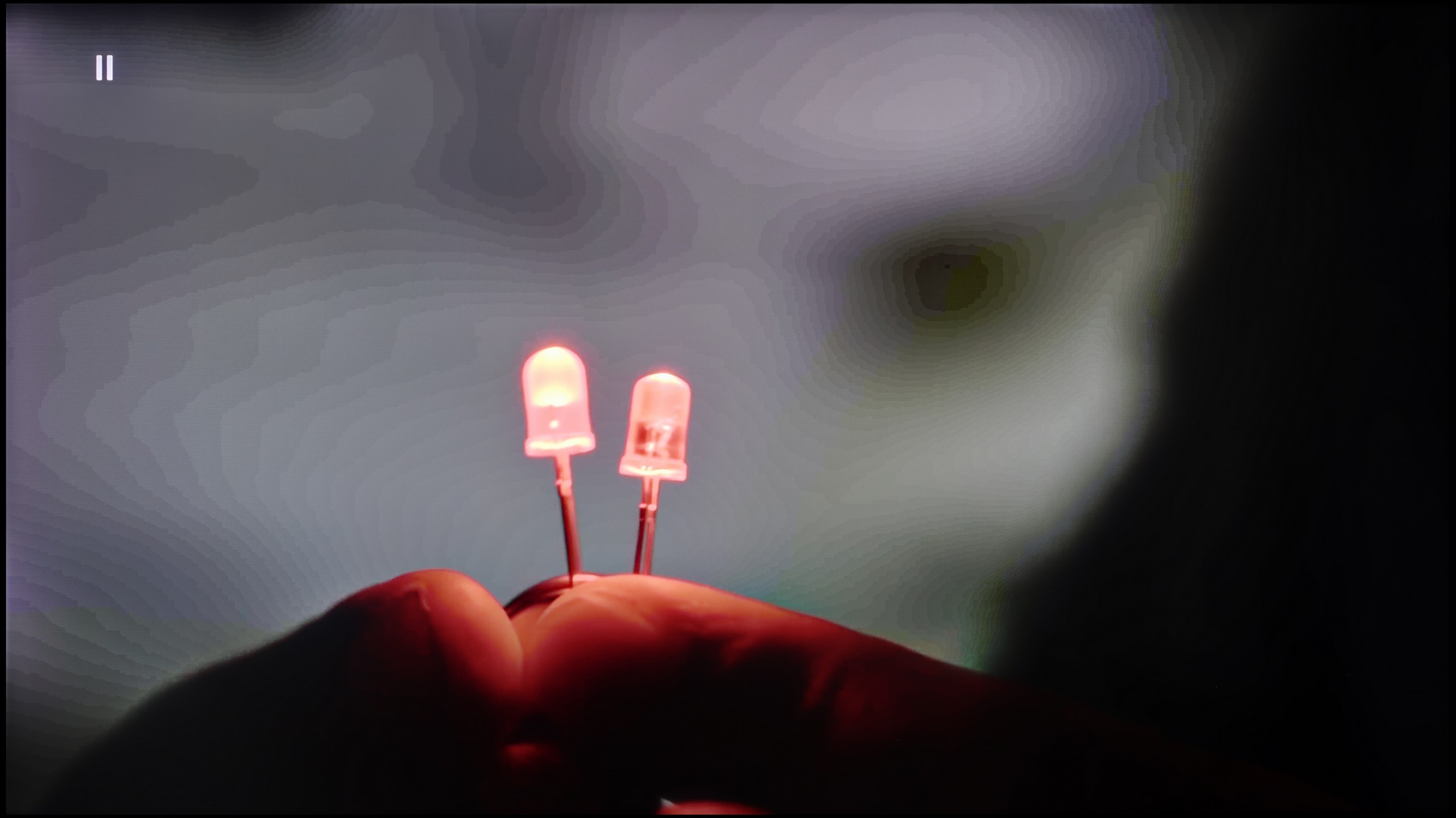
Image without overscan on the SD signal


Once again, we will take a look at the function responsible for smooth gradation, but we will also address the one that aims to improve the quality of lower-quality materials. The default smoothing of tonal transitions, as we have seen, was not the worst, but it can still be improved. The function has a slider, which allows us to adjust its strength. We recommend using the first one, as it yields very good results and does not blur important details.
Image scaling in LG C4 is quite good; however, it cannot be said to be without flaws. The image is slightly sharper by default, although not in a very noticeable way. Admittedly, there are jagged edges on the trees, but this is not a major issue compared to other manufacturers.
The digital image processing in TCL C9K is rather mediocre. The tone transition smoothing feature is supposedly present, but activating it hardly makes any difference – colour banding is still visible, and it can inadvertently highlight elements we would prefer to hide, such as textures of objects. Fortunately, it does not remove film grain, but that's scant consolation considering the effects are still poor. Thus, it's hard to recommend using this option.
On the other hand, image scaling performs significantly better. Lower quality materials look quite decent – characters and backgrounds are represented clearly, although of course, with sources like 576p, the limitations of the physics cannot be disguised. Sometimes, there's characteristic aliasing of objects, but that's due to the source itself, not the algorithm. A plus for the fact that there are no overscan issues – the image is neither artificially cropped nor enlarged.
Blur and motion smoothness
8.5/10
7.8/10

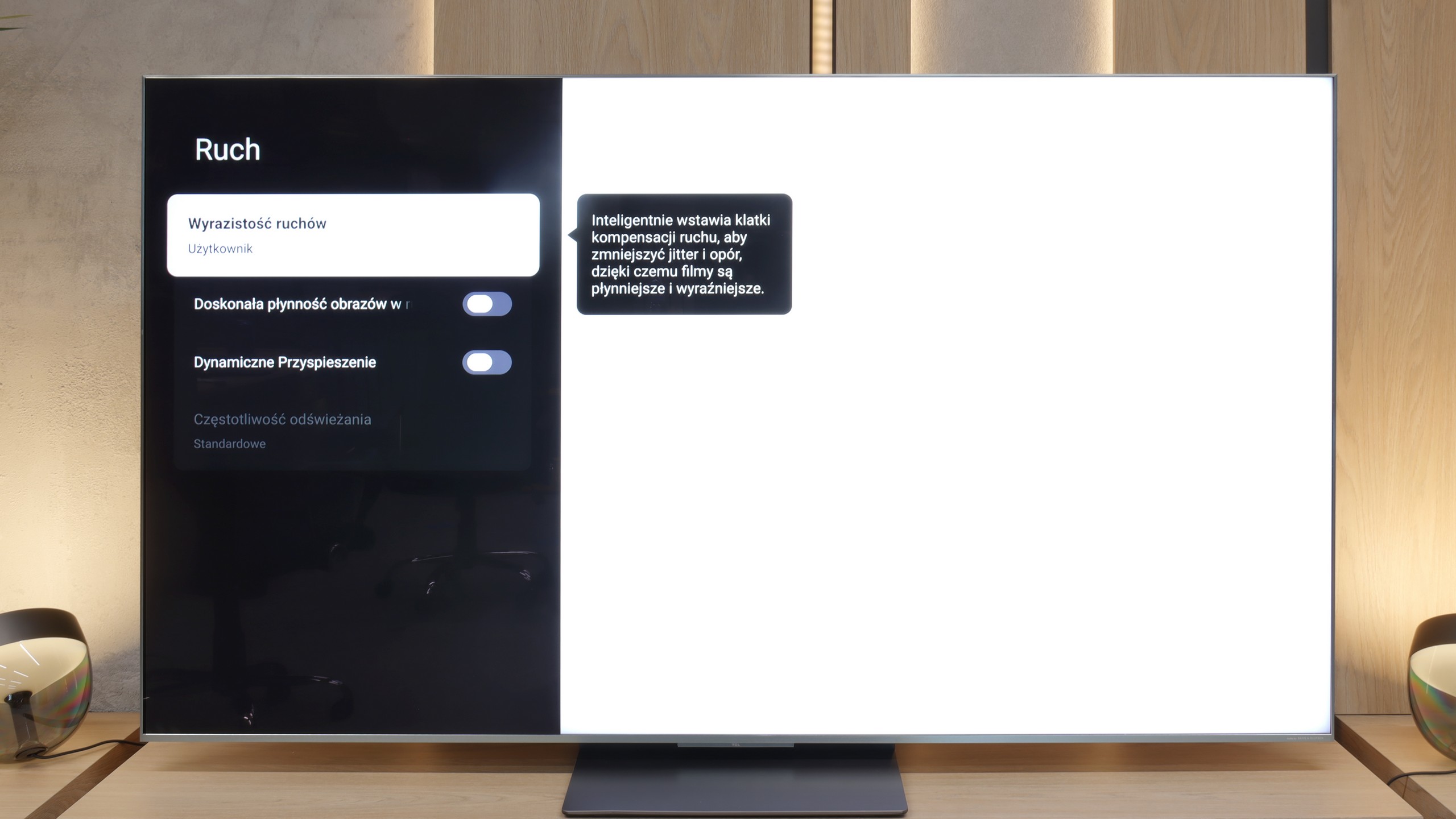
Blur (native resolution, maximum refresh rate):



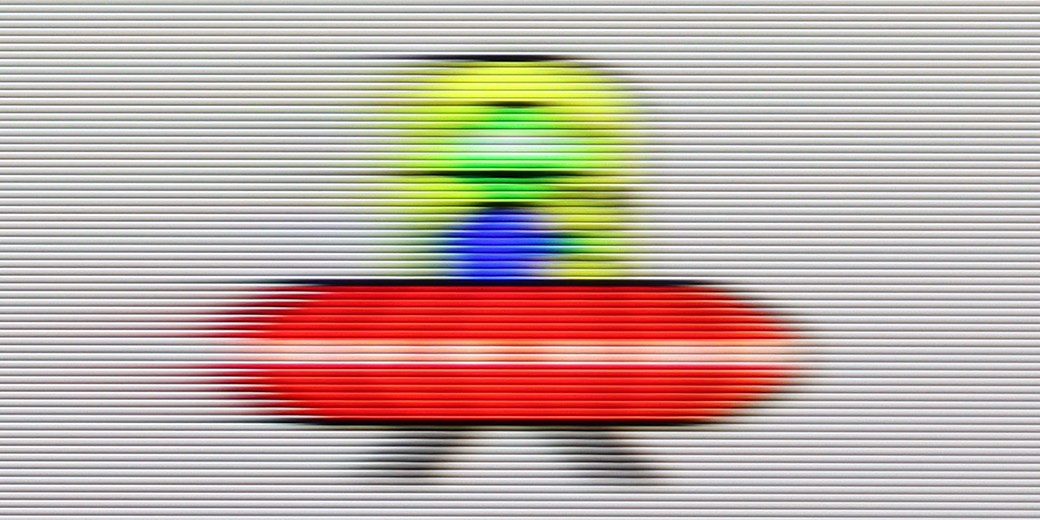
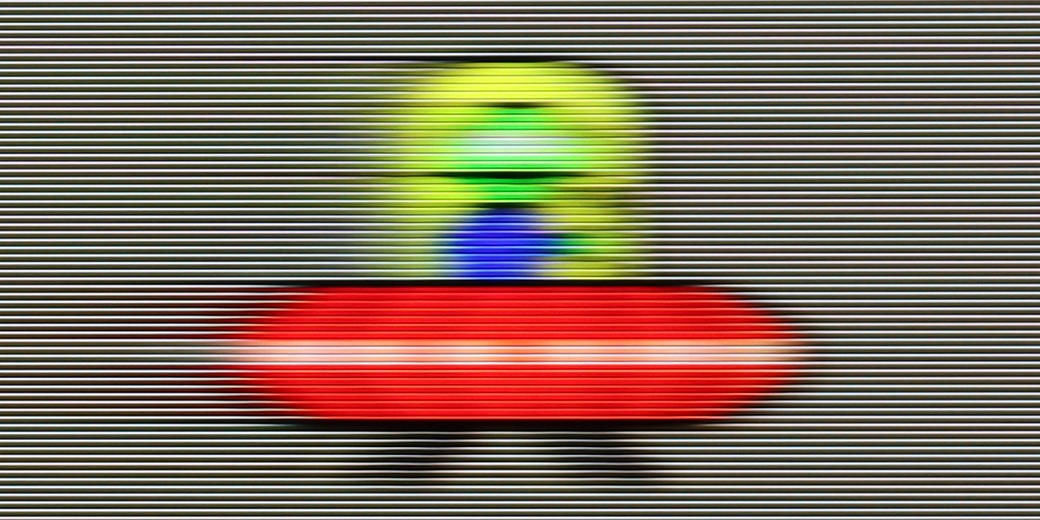
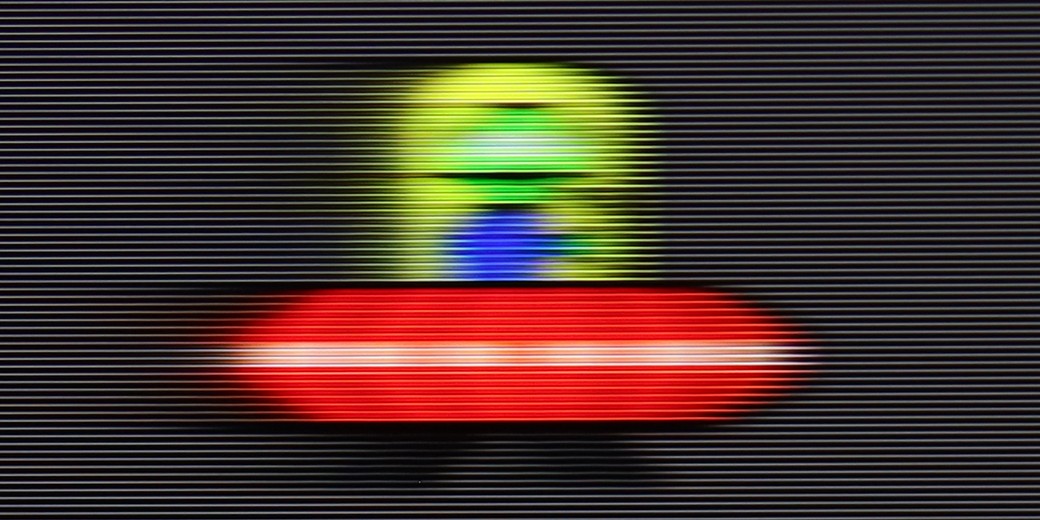
Blur (BFI function enabled):
Image flickers in this mode






Smużenie ():
Smużenie (1080p@288Hz):


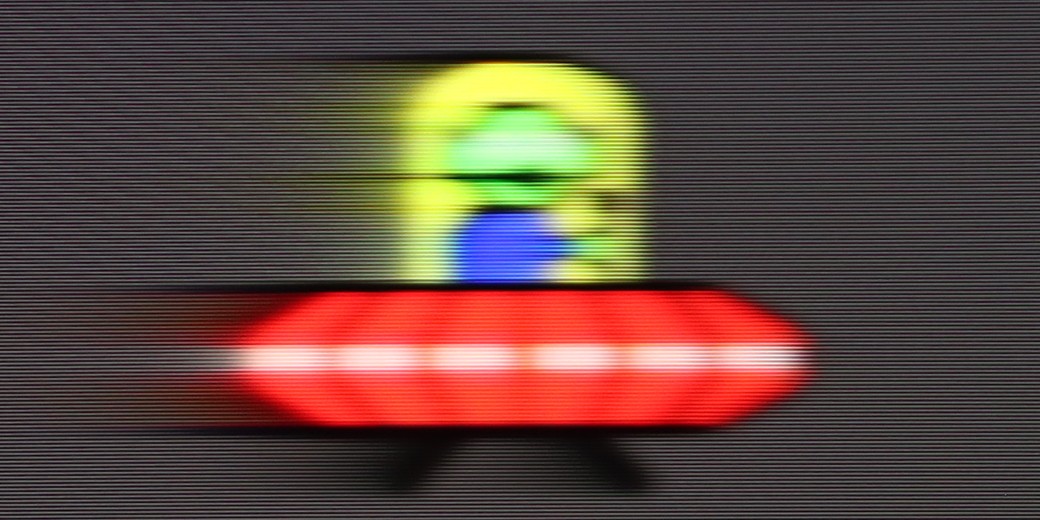
The maximum refresh rate that we can set on the LG G4 is 144 Hz. Naturally, this is only possible when connecting the television to a very powerful PC. In other cases, we will be operating at a maximum refresh rate of 120 Hz, which is recommended if we primarily want to watch sport or content with a lot of motion dynamics. For those requiring high fluidity of the image, the manufacturer has implemented a multi-step motion smoother called "TrueMotion". It has been divided into two separate sliders that adjust the sharpness of moving images (De-Blur) and judder (De-Judder). Both sliders can be set within a range from 0 to 10, with each degree affecting the degree of smoothing, allowing everyone to find their golden mean.
The LG OLED C4 panel features an average response time of less than 1 ms (which directly results from our measurements), allowing for an incredibly clear image that is unattainable for LCD televisions, whose response times can be as high as several milliseconds. This is clearly visible in the pictures from the "UFO Test," showing no trailing blur behind the object.
Similar to the C8K, the C9K is also a really fast television – both figuratively and literally. On board, we have a 4K panel with a refresh rate of 144 Hz, and at lower resolutions, the panel can even ramp up to 288 Hz. Such speed translates into practice – while watching sports or playing games, the picture looks very smooth and clear. Additionally, in films, we get an extra motion smoothing feature called Motion Clarity, which allows you to adjust the smoothness to your own preferences – from the cinematic "stuttering" of frames to nearly theatrical smoothness.
Console compatibility and gaming features
10/10
9.8/10
- ALLM
- VRR
- VRR range40 - 144Hz48 - 288Hz
- Dolby Vision Game Mode
- Correct implementation of HGIG
- 1080p@120Hz
- 1440p@120Hz
- 4K@120Hz
- Game bar

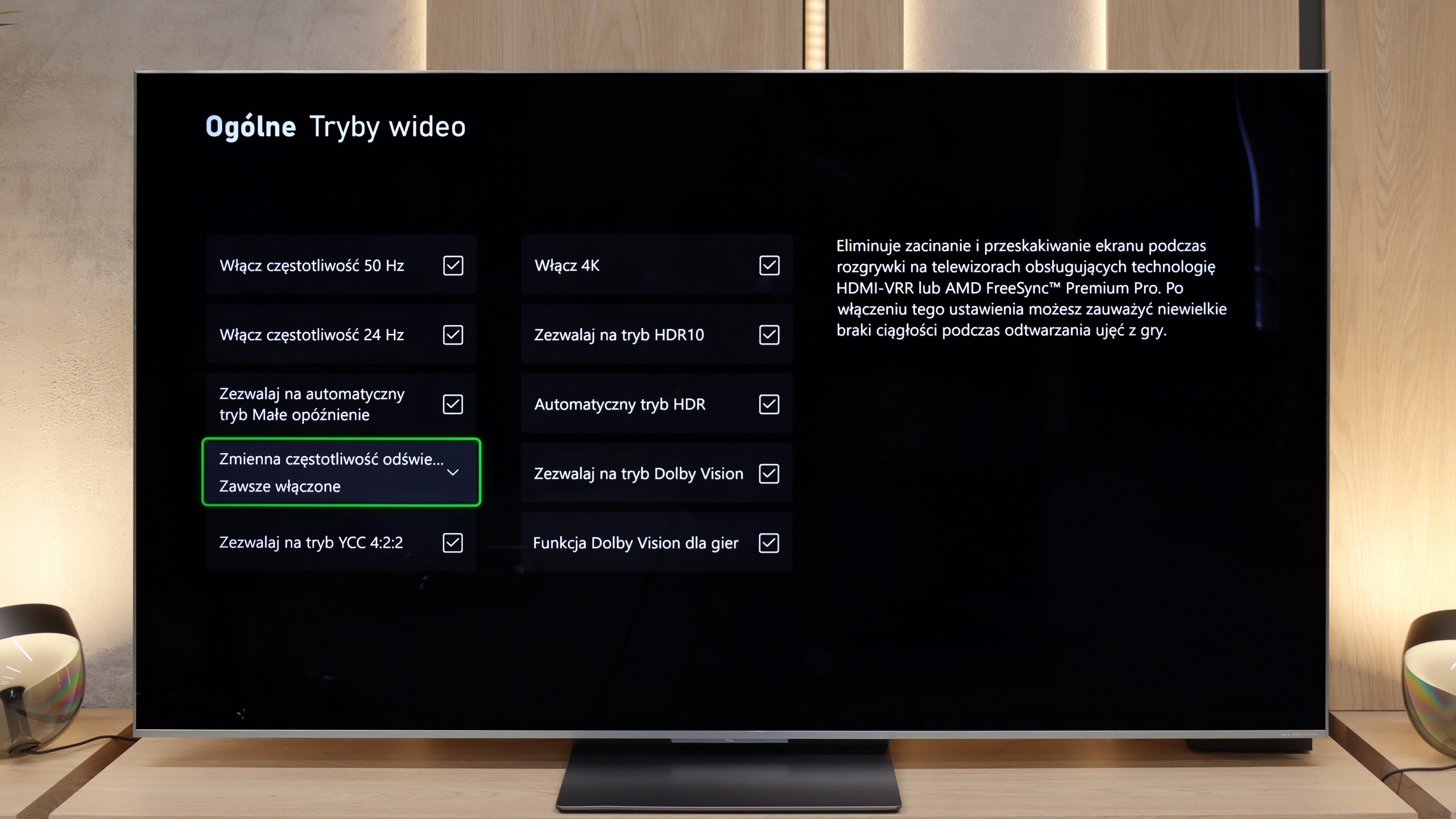

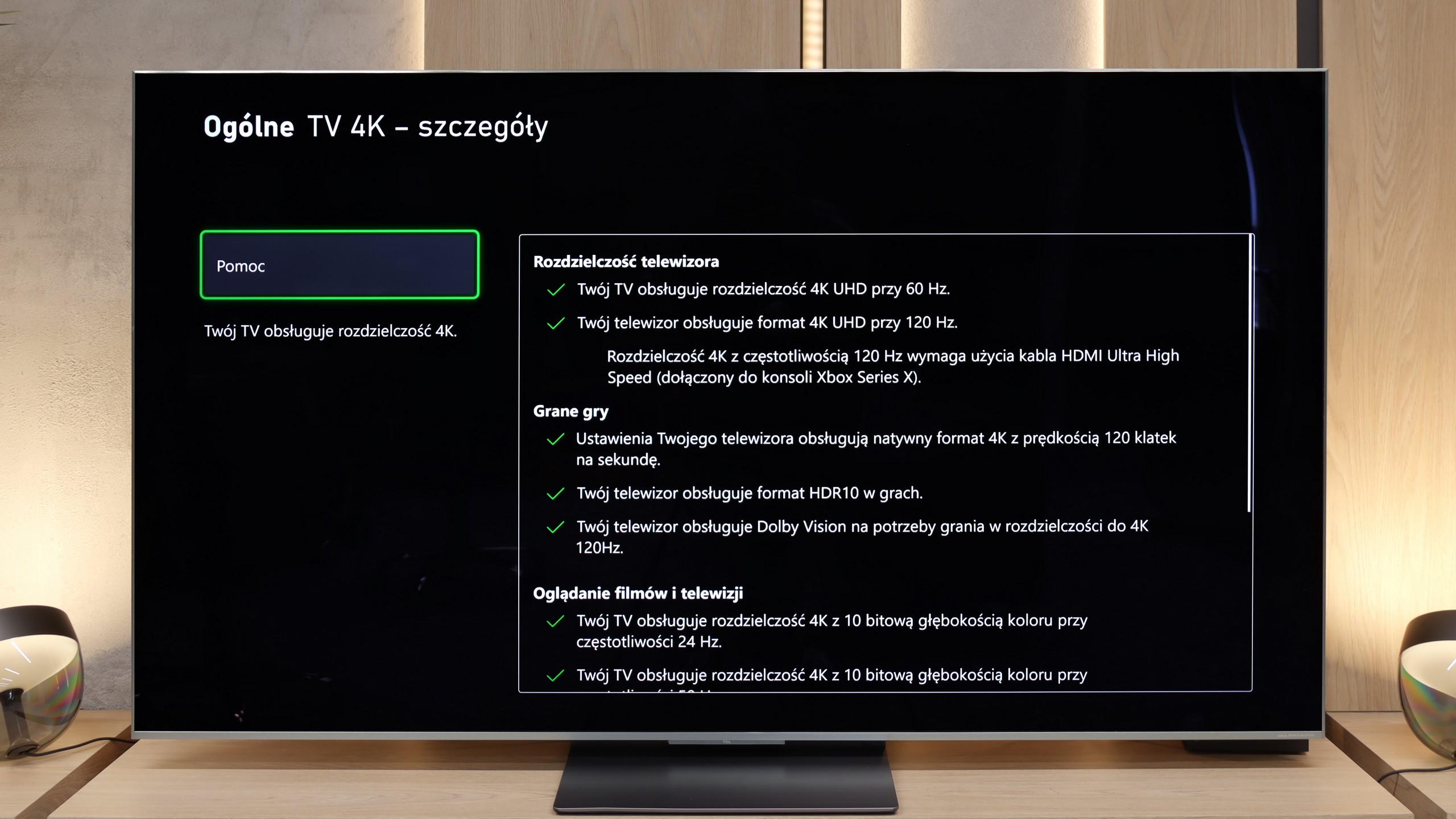

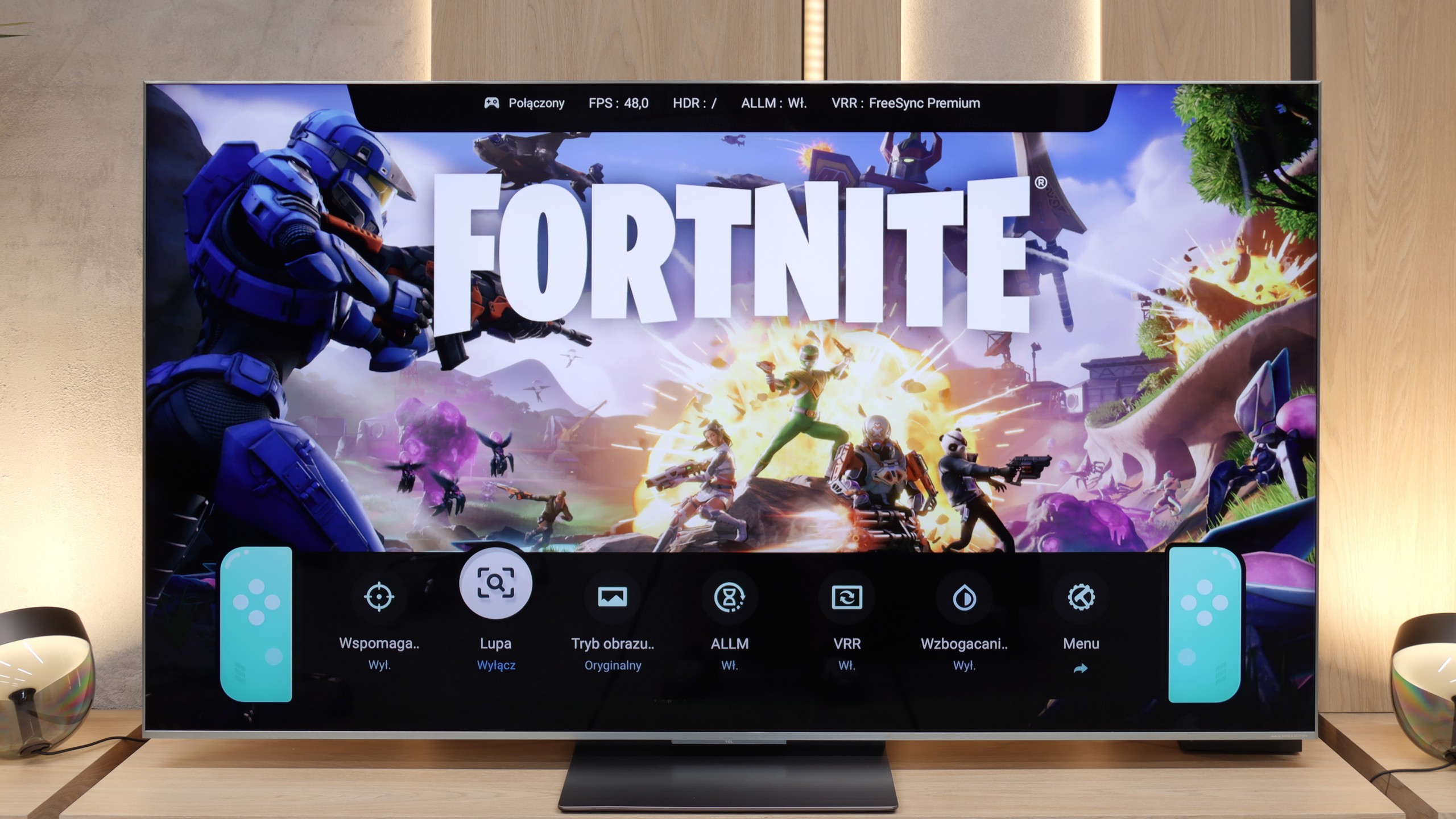

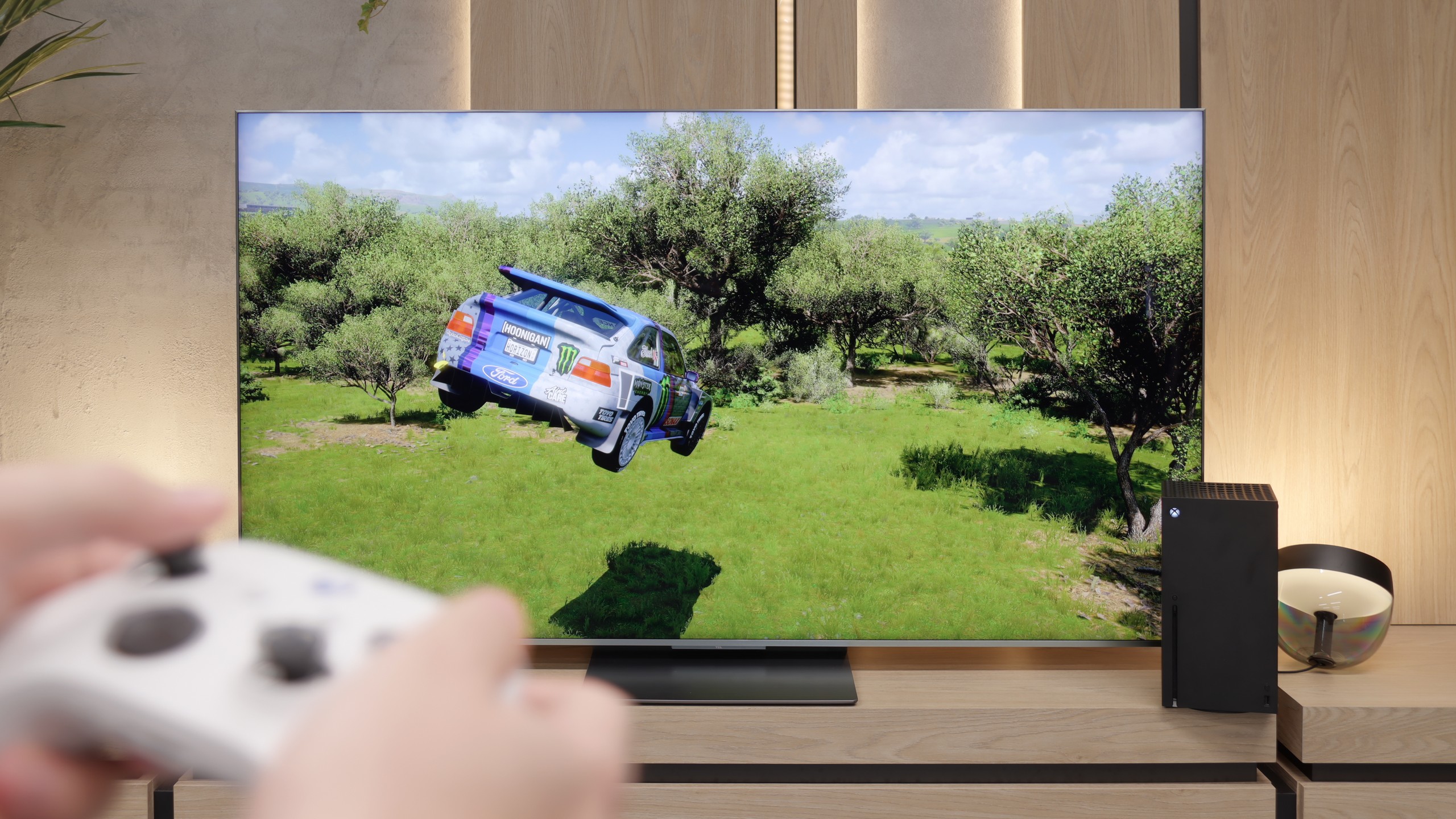
We can already say that LG C4, like practically every OLED television from the manufacturer, is exceptionally good in terms of compatibility with consoles and PCs. Thanks to the implementation of four full bandwidth HDMI 2.1 ports at 48 Gbps, the manufacturer has included all features that enhance the gaming experience, among which we find simultaneous support for FreeSync and G-Sync technology. With such a tandem, gamers with a graphics card from AMD or Nvidia can confidently opt for C4. However, what should delight the players requiring the highest possible quality the most is the simultaneous implementation of HDR Dolby Vision and HGIG mode. The first is particularly important as it works with extremely low input lag in all settings.
A standard in the Korean manufacturer's televisions is also the implementation of GameBar, allowing for quick adjustments of settings "on the fly" without the need to exit the game. It also enables image adjustments for visually impaired individuals, which is a very nice touch. Another important piece of information is that when VRR technology is enabled, we will not experience a drop in contrast. This is, of course, due to the panel's design and the absence of conventional backlighting. However, it is normal for shades of grey to flicker slightly, although this is a characteristic feature of this function regardless of the manufacturer and television.
In summary: LG C4, just like all of the manufacturer's OLEDs equipped with high refresh rate panels and HDMI 2.1 ports, creates a harmonious whole with consoles. In practice, it is a complete television, and if we expect the highest possible performance in gaming, C4 will be an ideal choice.
For gaming, the TCL C9K is a complete tool. Here we have two (out of four) HDMI 2.1 ports with full bandwidth of 48 Gbps, so all the key technologies work: VRR (Variable Refresh Rate) and ALLM (Auto Low Latency Mode). Additionally, the manufacturer has included a really intuitive Game Bar, which allows you to quickly check the most important parameters and adjust settings without rummaging through the menu. Also worth noting is TCL's policy – the television does not shy away from any HDR formats, even in game mode. Whether it's HGiG or Dolby Vision for the Xbox Series S/X console – everything works as it should, giving the player a wide range of freedom.
Input lag
10/10
9.8/10
SDR
HDR
Dolby Vision
The input lag of the LG C4 is at an incredibly low level in every scenario. Even the most dedicated gamers will surely appreciate the very low input lag at demanding 4K 120 Hz settings with HDR, which is just 5 ms. It is also worth noting that the lag at the same settings but with Dolby Vision HDR enabled remains unchanged, which is not so obvious with the competition. Therefore, it deserves the highest rating and recommendation.
In terms of input lag, the TCL C9K performs exceptionally well. With 120 Hz content, the delay reaches only 7 ms, placing it among the very best televisions available on the market. Naturally, with 60 Hz materials, the input lag increases to around 15–16 ms, but in practice, this has little impact on the final responsiveness of the screen to our actions on the pad.
Compatibility with PC
8.6/10
8.6/10

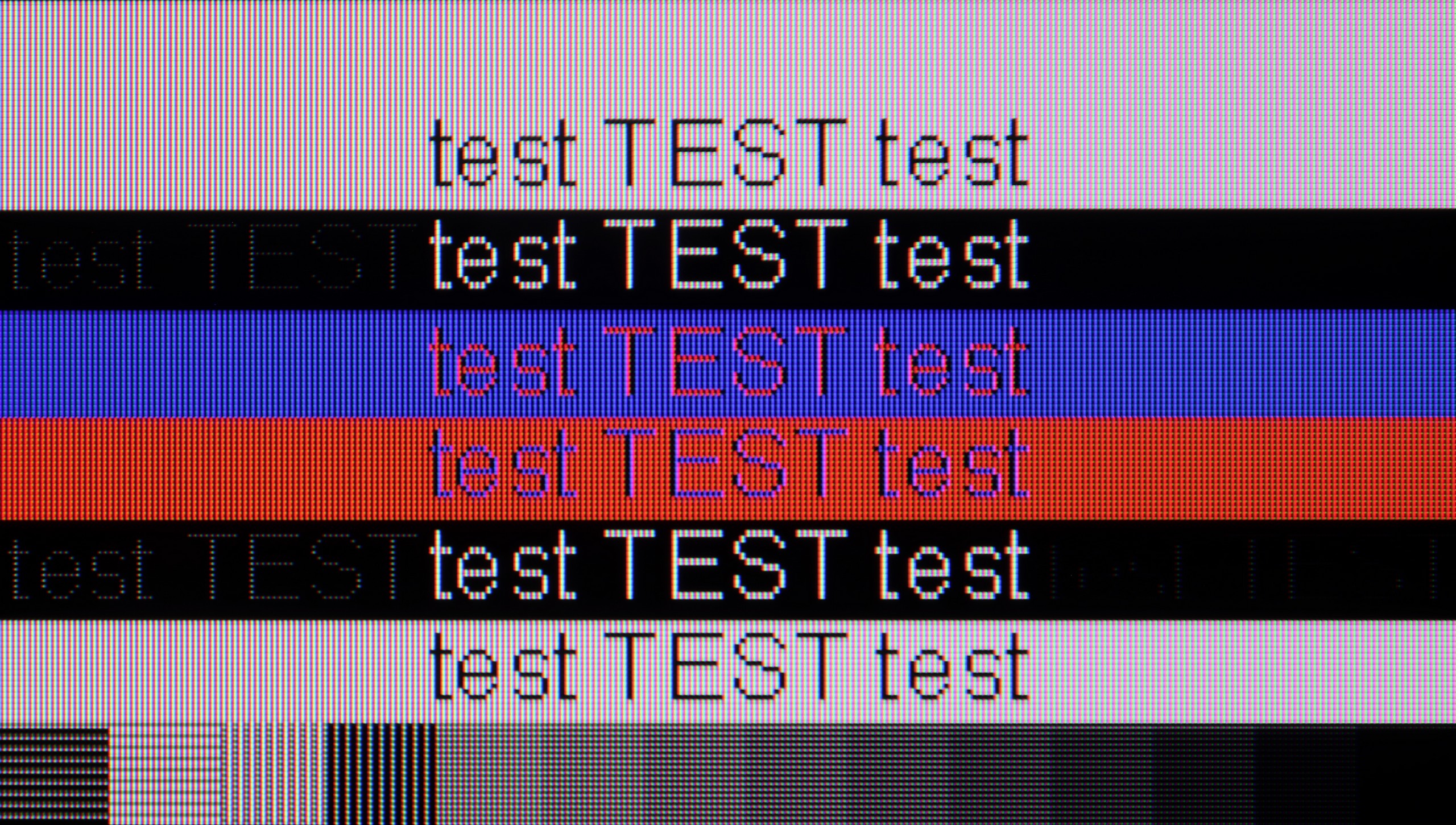
LG C4 in combination with a PC performs excellently, thanks to a very low latency of just 13.5 ms, which is practically an instantaneous response between the mouse, eye and screen. A particularly important issue when working on the screen is the readability of text, which in the case of the tested television is very good. However, it is worth noting that to achieve sharp fonts, you need to enable the passthrough option in the settings.
The RWBG pixel arrangement has no significant impact on the display of fonts or letters, which is a considerable advantage over Samsung's QD-OLED panels. Users of both computers equipped with the Windows operating system and macOS will certainly be satisfied with the experience on the screen of the tested television.
When it comes to office work, the TCL C9K does not disappoint – thanks to its 4:4:4 chroma support, the readability of fonts is at a good level, so writing or working with documents should not be a problem. One might notice slight issues with dimming horizontal lines, but in everyday use, it's hard to call this a real flaw. However, the greatest potential of the C9K reveals itself in PC gaming. Here, the television showcases its full capabilities – it can switch to lower resolutions, such as Full HD, and display images at up to 288 Hz. Additionally, it supports both G-Sync and FreeSync, so image synchronisation with the graphics card works flawlessly. It's difficult to have any major reservations about this set – it's truly a top-tier screen for computer gaming.
Viewing angles
7.5/10
4.5/10
The undeniable advantage of OLED panels is their efficiency in the context of group viewing, that is, from various angles. LG C4 maintains very good contrast, colour saturation, and fidelity. Although this is not the result of organic televisions supported by MLA technology, it cannot be said that anyone who purchased the device was dissatisfied with the results obtained. However, it should be noted that at sharp angles, a slight greenish tint can be observed. This is a characteristic feature of WRGB panels from LG, without the aforementioned microlens technology, and unfortunately, there is nothing that can be done about it.
A new feature in TCL televisions for 2025 is the WHVA panel, which is designed to provide better viewing angles than standard VA panels. And indeed – progress is visible. Looking at the screen from the side, the image is clearer and colours do not degrade as quickly as in previous models. However, this does not mean that we are dealing with the level of top-end coatings or solutions known from IPS panels, and certainly not from OLEDs. The picture remains readable, but brightness clearly decreases. This is definitely a step forward compared to earlier TCL models, but not yet a complete revolution.
TV efficiency during daytime
5.7/10
7/10

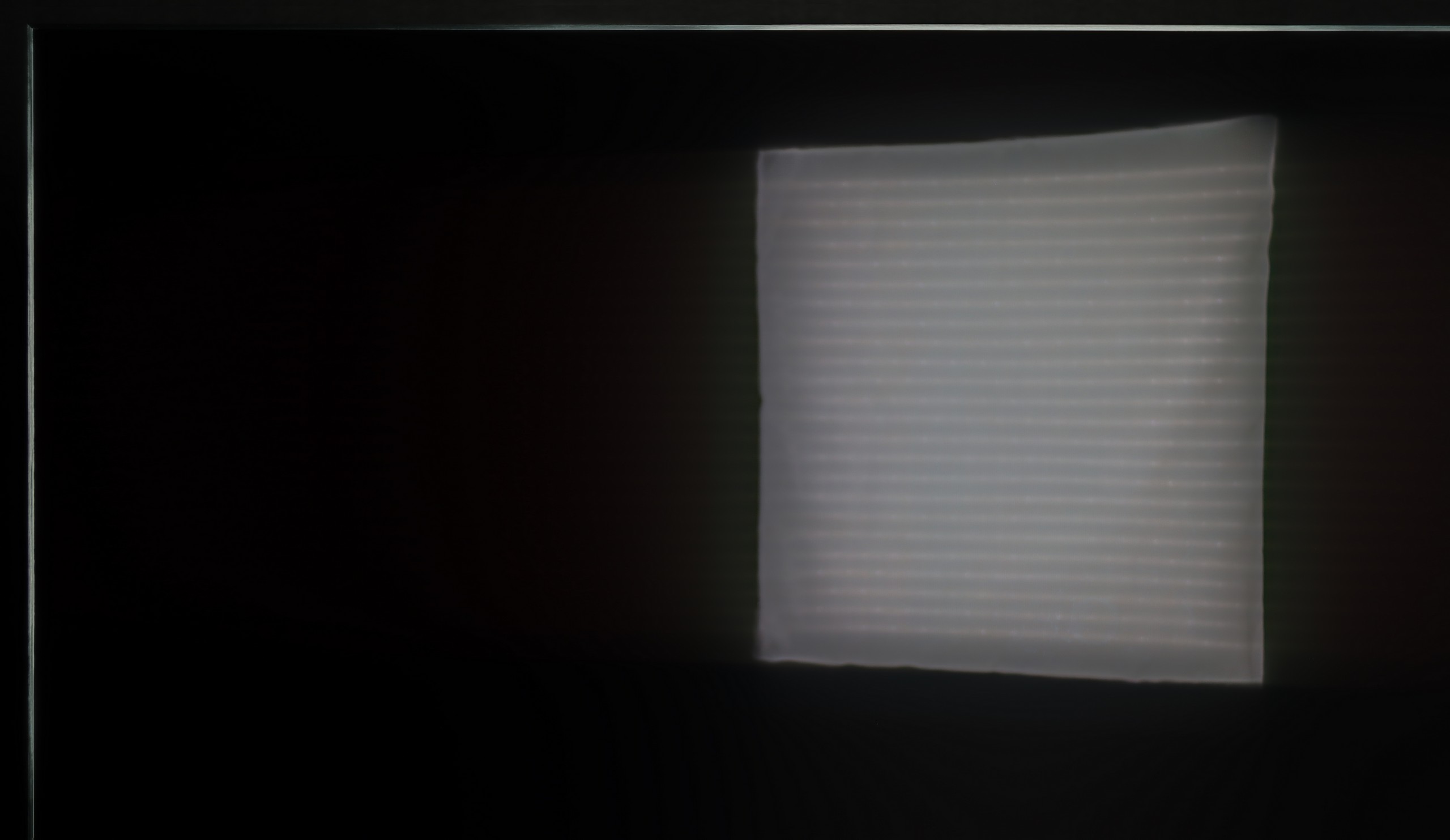


Matrix brightness
Average luminance SDR
TCL C9K: 642 cd/m2
LG OLED C4: 367 cd/m2
The maximum brightness of the television in SDR materials is 367 nits. For an OLED television, this is a very good result that allows for quite comfortable viewing during the day. It is worth noting two things. Thanks to the glossy coating of the screen, reflections are held well in place and do not spill over onto the rest of the display. The second issue is the brightness of the screen at 100% white fill, which hovers around 220 nits, a remarkable result, as until recently OLED televisions in this range could only "boast" of brightness that was half as much. This means that conditions for watching, for example, winter sports will be very good.
The new WHVA matrix coating has its strengths and weaknesses. On one hand, it handles smaller reflections quite well, while on the other hand, with stronger light sources, it is evident that the suppression of reflections is not at the highest level. Fortunately, the coating does not ruin what is most important: the blacks and colour saturation. This is a definite plus because in many competing models, compromises in this area are more painful. Additionally, there is very high brightness – in SDR content, the C9K can achieve an average of 650 nits in SDR materials. This is a result that is more than sufficient for watching television or films in more challenging lighting conditions, even on a sunny day.
Details about the matrix
Subpixel Structure:

Panel uniformity and thermal imaging:

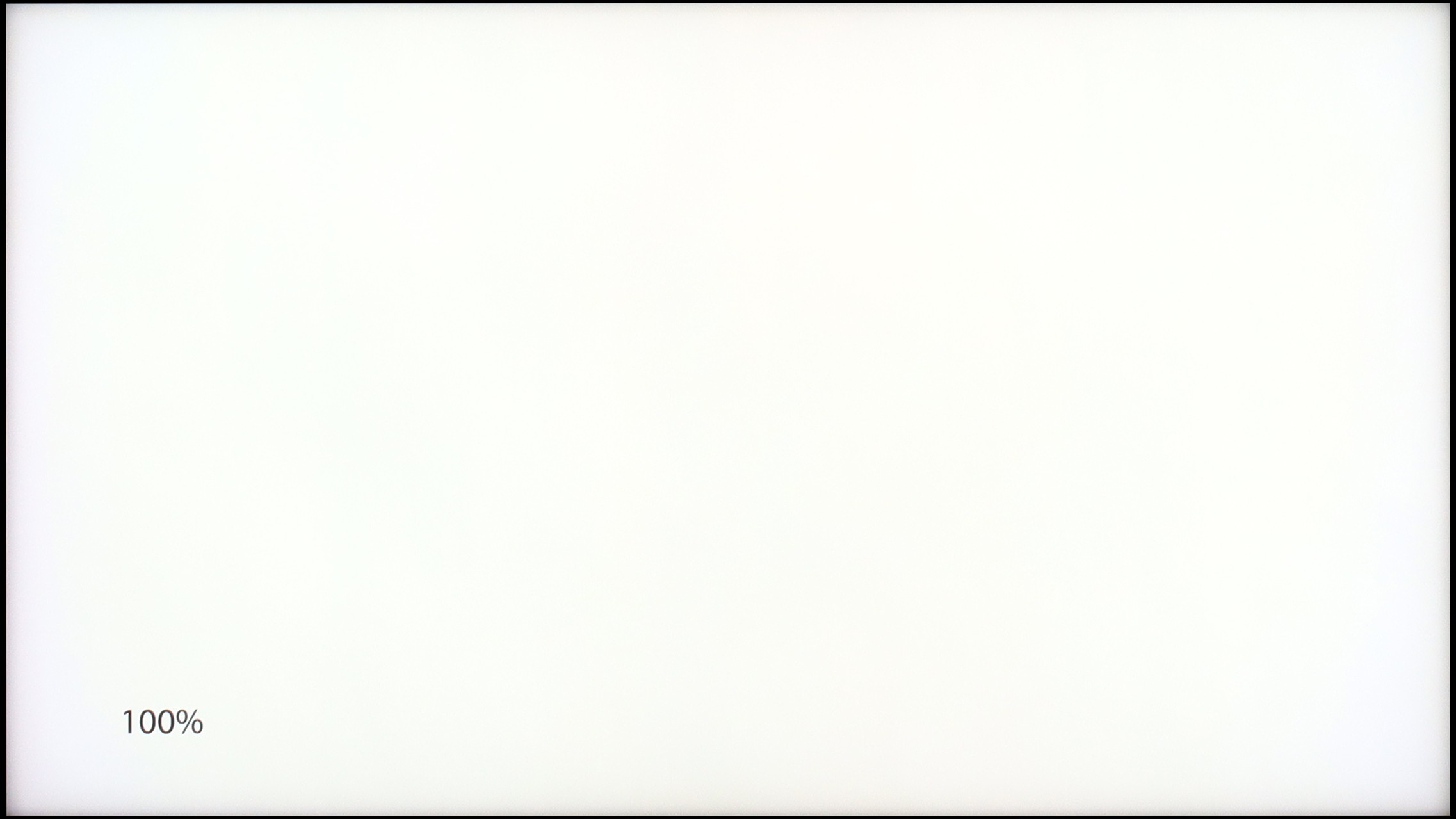
LG OLED C4
TCL C9K
TV features
8.2/10
7.7/10
- HDMI inputs0 x HDMI 2.0, 4 x HDMI 2.1 48Gbps2 x HDMI 2.0, 2 x HDMI 2.1 48Gbps
- Other inputsIR (remote)
- OutputsToslink (Optical audio), eARC (HDMI), ARC (HDMI)Toslink (Optical audio), eARC (HDMI), ARC (HDMI)
- Network InterfacesWi-Fi 2.4GHz, Wi-Fi 5GHz, Ethernet (LAN) 100MbpsWi-Fi 2.4GHz, Wi-Fi 5GHz, Ethernet (LAN) 100Mbps
- TV receptionDVB-T, DVB-T2, DVB-S, DVB-S2, DVB-CDVB-T, DVB-T2, DVB-S, DVB-S2, DVB-C
Classic features:
- Recording to USB (terrestrial TV)
- Recording programming
- Picture in Picture (PiP)
- RF remote control (no need to aim at the screen)
- Backlit remote control
- Teletext
- Audio only mode
- Possibility to connect Bluetooth headphones to the TV
- Possibility to simultaneously use Bluetooth headphones and the TV speaker
Smart features:
- AirPlay
- Screen mirroring (Windows Miracast)
- Wyszukiwanie głosowe
- Voice search in native language
- Ability to connect a keyboard and mouse


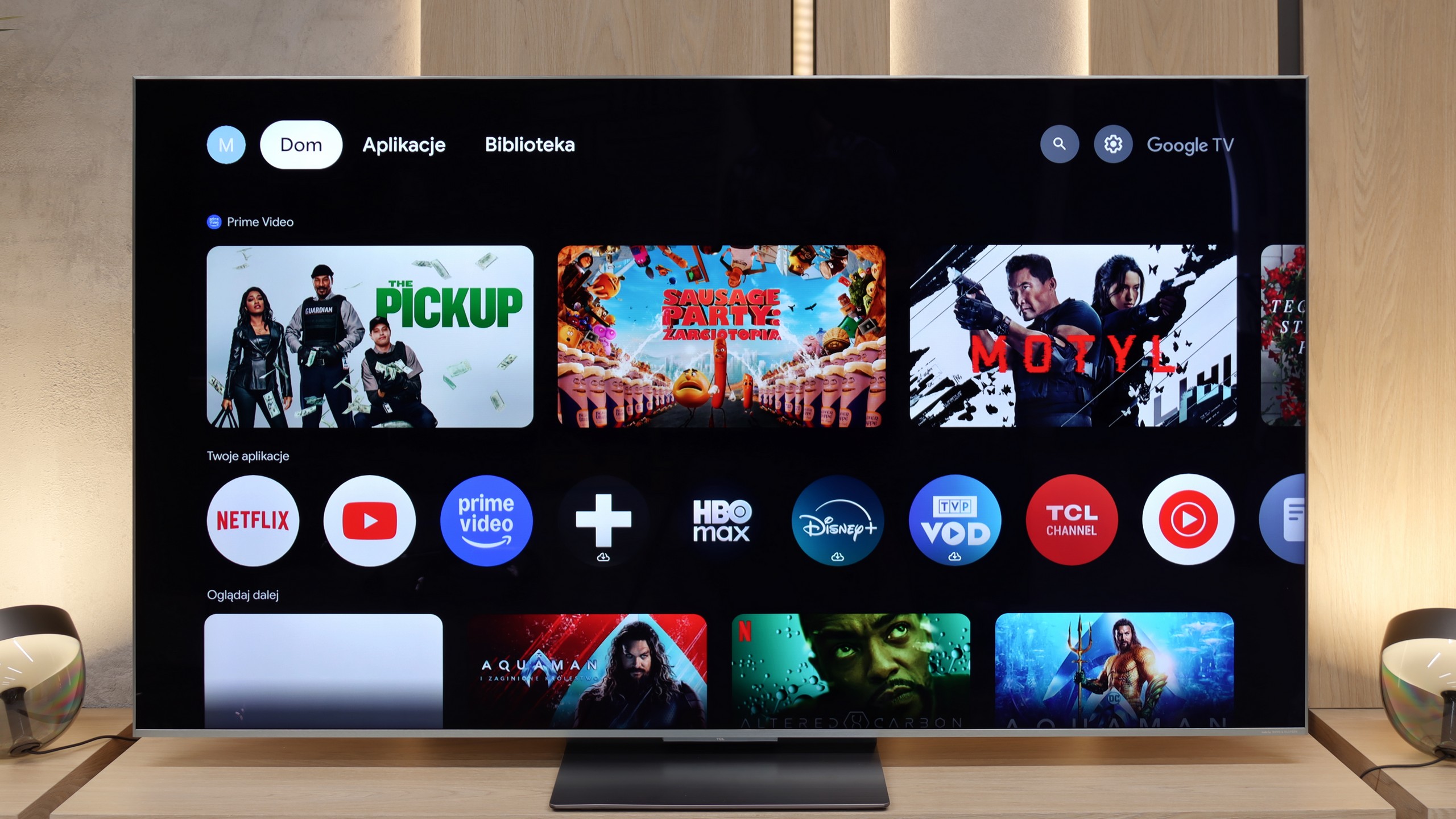
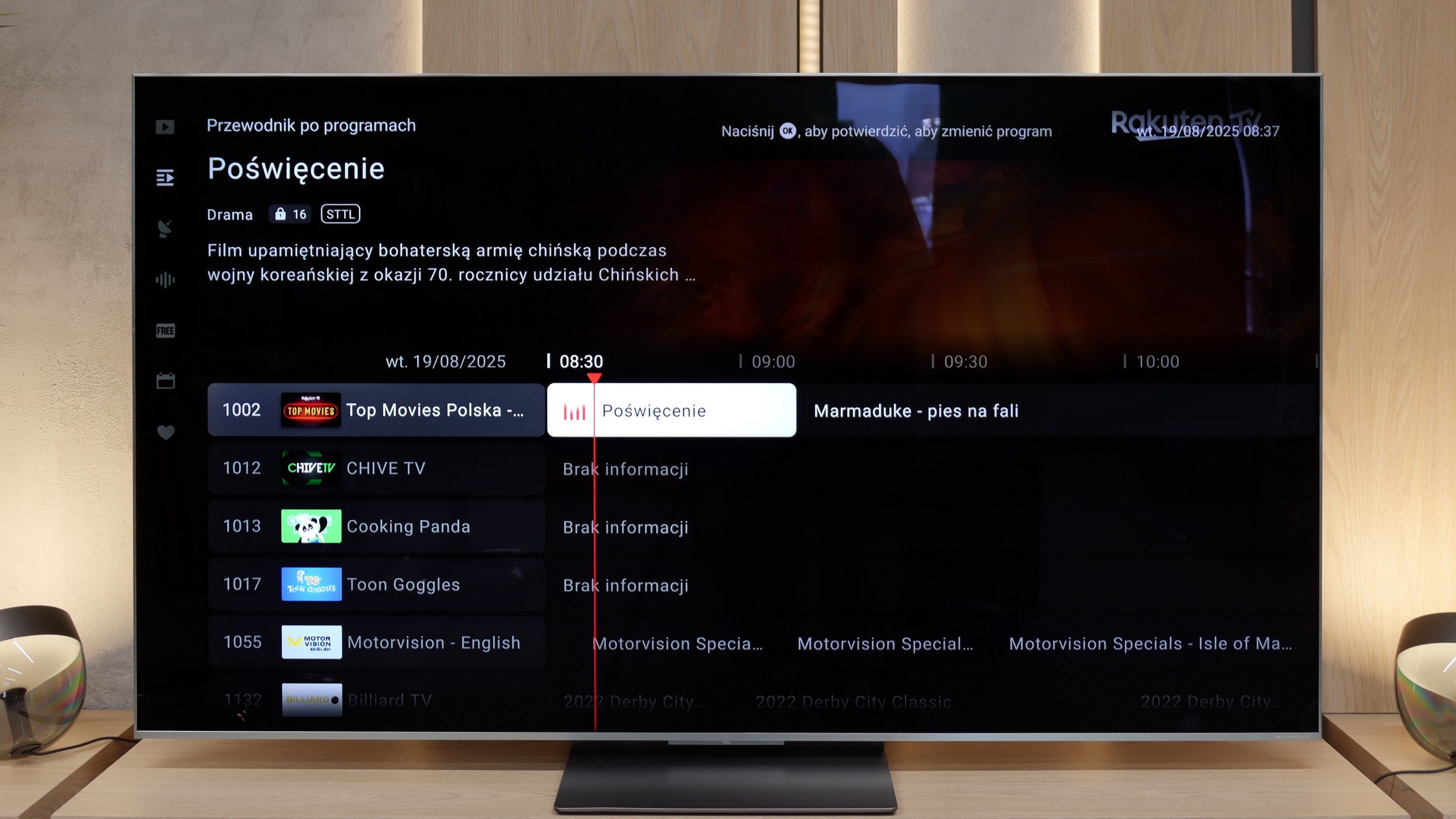
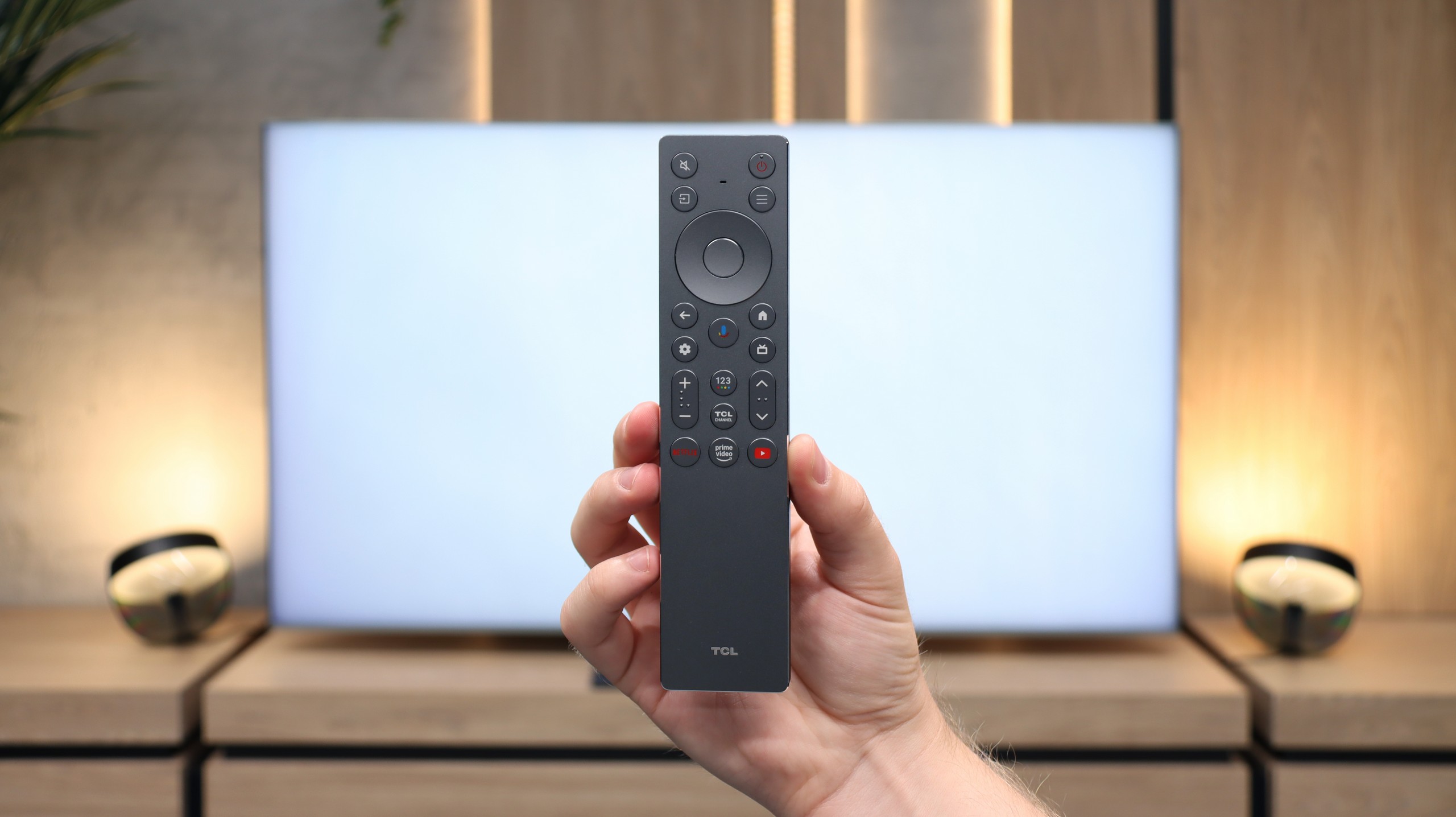
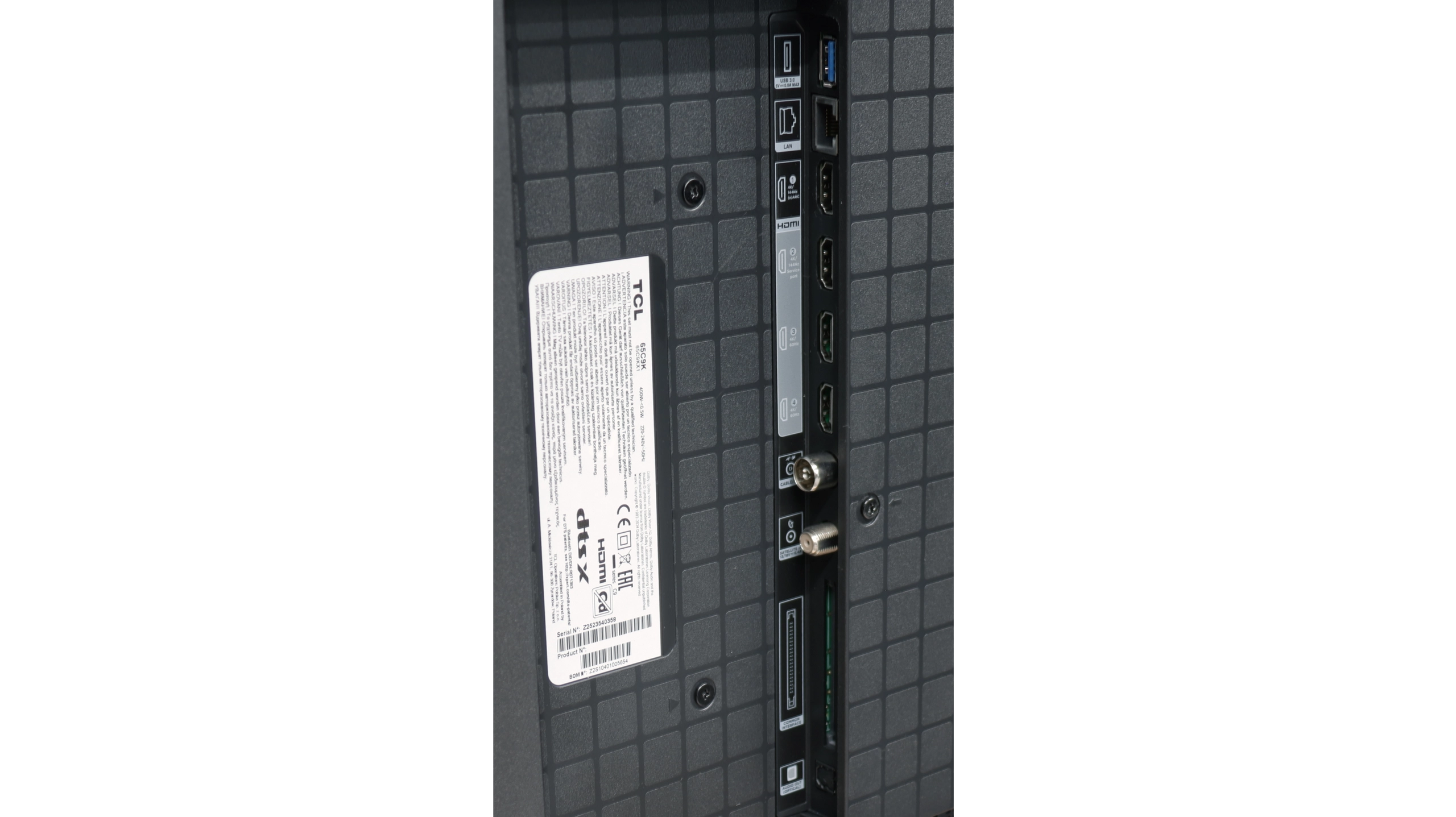
LG uses the well-known proprietary WebOS system that has been around for many years. The system offers practically all the most important applications, and the few that are missing can be counted on one hand, such as CDA or KODI. It is also worth mentioning that the modern web browser and the remote control with a built-in mouse allow for convenient use of streaming services in this way, if there is no built-in application.
WebOS also features a highly valued ability to perform operations with a cursor that appears when the remote control is in motion. The convenience of such a function is invaluable when typing in queries or passwords for portals. WebOS, like most systems, also supports features such as screen mirroring, AirPlay, voice search in Polish, and the ability to connect headphones via Bluetooth. On more practical matters, WebOS allows simultaneous use of headphones and the TV speaker, which will certainly be a big help for people with hearing impairments. Among the more interesting features, particularly appreciated by sports fans, is the option to turn on an alert notifying about an upcoming match, ensuring that we never miss a broadcast. The home panel is also praiseworthy, allowing for the control of all smart devices connected to the home network. For example, the cycle of completed laundry will be signalled by a notification in the upper right corner.
In summary, the WebOS system, although less known and having certain limitations compared to Android TV, offers stable and fast performance and supports most features that users may need. It is a solid solution for those looking for a simple and effective operating system in their television.
Classic TV Features
In terms of basic TV functions, the TCL C9K does not disappoint – it has everything that most users expect. The EPG guide operates smoothly, teletext is available, and pairing Bluetooth headphones, a mouse or a keyboard is trouble-free. However, it should be noted that in the Google TV system – as in other TCL models – there is a lack of more advanced options, such as recording programmes or picture-in-picture (PiP) mode. Some might find this insufficient, especially if they have used such features on competitors' devices. It is also worth mentioning that we only have one USB port available – sufficient to connect a drive with films or a USB stick, but if someone plans to use multiple drives, they might find this lacking.
Smart Features
While in terms of classic solutions the TCL C9K does not stand out, it showcases its full potential in the realm of smart features. The Google TV system is currently the most popular platform, and it is easy to see why – the app library is huge. Netflix, YouTube, Disney+, HBO Max, Amazon Prime Video – all are readily available. Only those who are very attached to more closed ecosystems, such as Apple Music, will feel the absence. A significant advantage is the built-in voice assistant – it works quickly, understands natural commands, and allows convenient control of the television: from changing channels to opening applications, searching for content, or checking the weather. This is precisely where the TCL C9K demonstrates that a smart TV is more than just an "internet-enabled television" – it is a tool that genuinely enhances everyday use of the equipment.
Playing files from USB
9.3/10
9.2/10
Supported photo formats:
Maximum photo resolution:

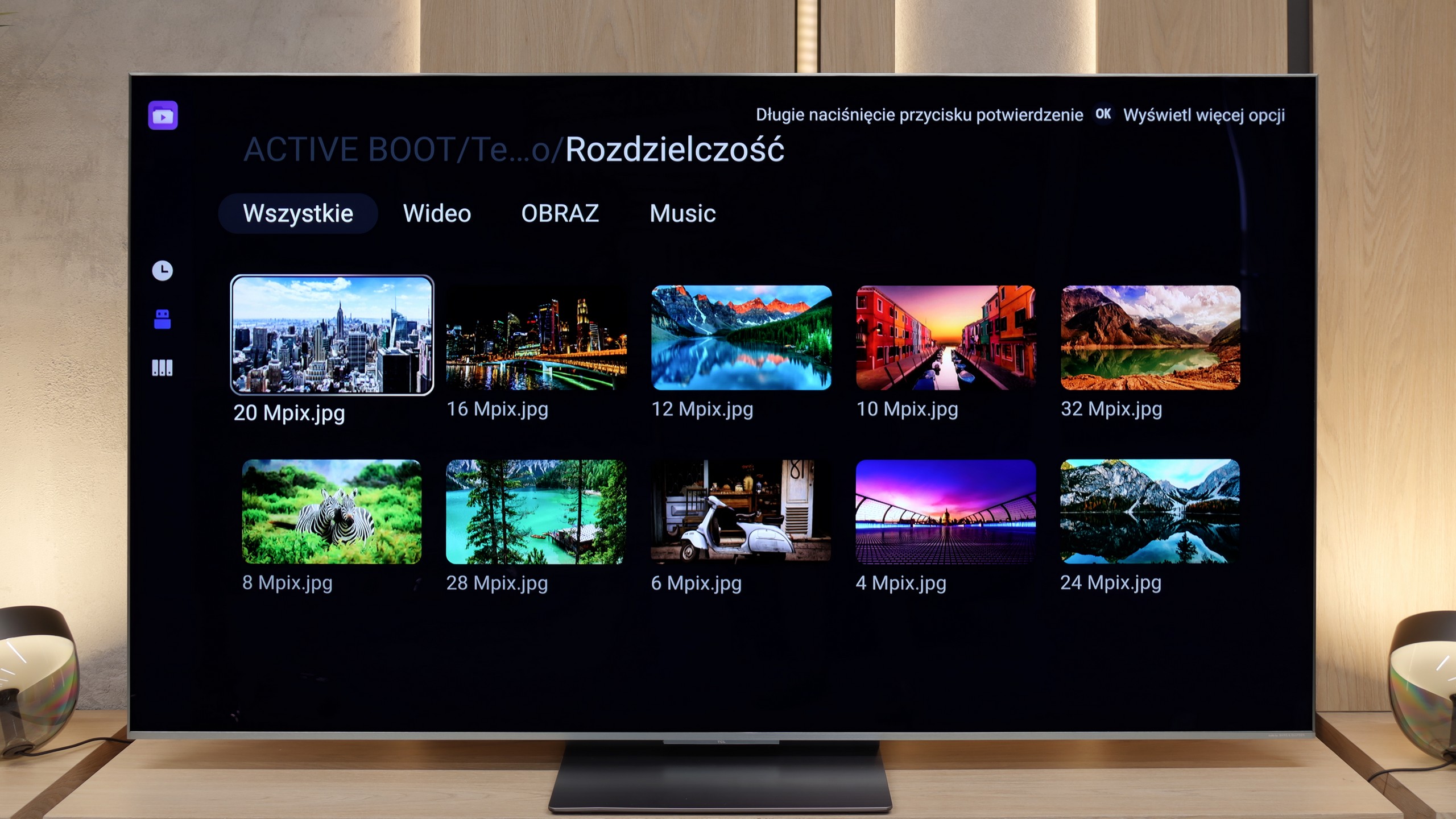
The default file player in LG C4 definitely handles all image resolutions well. We can successfully play videos recorded in virtually all the most popular formats, including Dolby Vision. The only codec that the C4 does not support is H.266 VVC, although this is currently rather unused. However, it is a pity that subtitles in .txt format are not supported. Attention should be paid to the supported image formats, of which there are only three: JPEG, PNG, and, importantly for Apple phone users - HEIC. However, the tested television cannot be faulted for lack of diversity in audio files, the playback of which will not be met with a compatibility warning.
The C9K handled most of the materials we put on the pendrive without any issues – from films in MKV format, through older AVI files, to audio tracks in DTS and FLAC. The only drawback remains the lack of support for photos in HEIC format from Apple devices, but this is a common issue among all manufacturers. However, the most important thing is that if someone is missing support for some exotic format, they can always turn to an alternative player available in the Google Play store. And this is where the advantage of the Google TV system becomes apparent – the ease with which one can expand the functionality of the television with additional applications.
Apps
9.1/10
9.6/10














































Sound
7.5/10
7.9/10
- Maximum volume-77dB
- Dolby Digital Plus 7.1
- Dolby True HD 7.1
- Dolby Atmos in Dolby Digital Plus (JOC)
- Dolby Atmos in Dolby True HD
- DTS:X in DTS-HD MA
- DTS-HD Master Audio
The implemented audio system in LG C4 has been very well tuned, allowing us to experience strong bass, as well as balanced mid and high tones. We can confidently say that in its price range, it is one of the better sounding televisions. However, we believe that those deciding to purchase the C4 will already own a dedicated audio set. The presence of DTS-HD Master Audio and Dolby Atmos codecs will not be without significance.
The sound in the TCL C9K is handled by the same set as in the C8K model – prepared in cooperation with Bang & Olufsen. It is a 4.2.2 configuration with a total power of 90 W, consisting of eight speakers positioned to create a fuller sense of space. And it must be admitted – the effect is impressive. Dialogues are clear, the highs and mids sound clean, and the bass does not get lost even during louder sessions. Of course, this will not replace a dedicated soundbar or home cinema system, but for built-in speakers – there is truly something to listen to.
*During tests of maximum volume, we noticed an unusual behaviour of the audio system. When the slider is set to 100%, the television reaches about 76–78 dB, but it can be heard that it is trying to generate greater power, after which the sound level is immediately corrected to the mentioned value. On the other hand, when we lower the volume to, for example, 70%, it initially drops as expected, but after a while it slowly rises back to the same level of 76 dB. This effect gives the impression of an aggressive limiter at work, which, regardless of the slider position, always brings the volume down to one level. We checked this behaviour several times, and in every case the result was identical – no additional “smart” volume adjustment or AI functions were active during this.
Acoustic Measurements
No acoustic data
77dBC (Max)
75dBC


